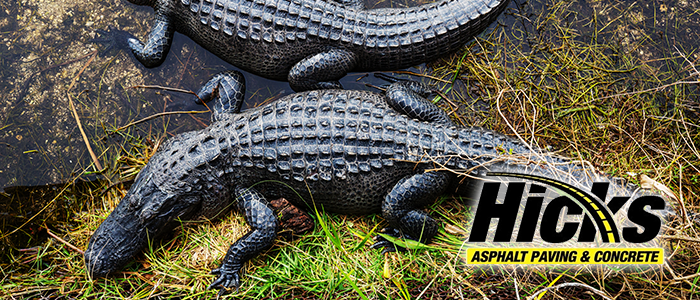Last week we began comparing and contrasting asphalt and concrete. Primarily, we focused on the installation process. The first steps for both asphalt and concrete are quite similar, but after a point, they diverge.
This week we continue to explore asphalt and concrete as options for residential paving. Part Two of this series will consist of after asphalt care as well as cost comparison.
Asphalt And Concrete After Installation
After contractors pour, both of the materials need to go through a post-installation process.
Curing
Asphalt and concrete both need to be cured after they are poured. Curing is a process that helps the materials reach their maximum potential for strength. The contractor maintains a certain level moisture in the material in order to complete the curing process. For the majority of standard asphalt and concrete mixtures, curing is a process that takes approximately a month. More specifically, it takes 28 to 31 days, with concrete traditionally taking a little longer.
Sealing
Sealing protects the materials from the elements such as water, as well as dust and debris from the environment. Sealant also helps strengthen paving against consistent traffic. All surfaces need to be sealed after paving, from patios to driveways, to commercial parking lots.
Asphalt has to be sealed every one to three years. Asphalt’s sealant schedule depends heavily on the type and regularity of the traffic it endures. Foot traffic, for example, does significantly less damage than regular driving over the surface.
Concrete, however, is much less specific. It needs to be resealed every one to ten years. Concrete sealing schedules do rely on traffic patterns, but also is determined by the type of sealant the original contractor used. Essentially, the thinner the sealant, the faster it wears down and needs to be replaced.
General environmental conditions impact sealant schedules. For example, asphalt that experiences snow on a fairly regular basis needs much more regular sealing.
Cost
On average, concrete installation costs are actually double the installation price of asphalt. However, both concrete and asphalt additional costs other than the initial installation costs.
Concrete incurs repair costs, because it has a tendency to crack or buckle, especially in locations with dramatic climate changes. The cracking and buckling is not necessarily a safety hazard, but it can cause the driveway to deteriorate quicker. The quicker the driveway falls apart, the sooner it has to be re-installed. Additionally, the cracking and buckling are just plain ugly.
Asphalt does not crack and buckle like concrete does, but it does have to be sealed more regularly. The big cost with sealant is actually labor costs, because it takes quite a few hours to do properly.





